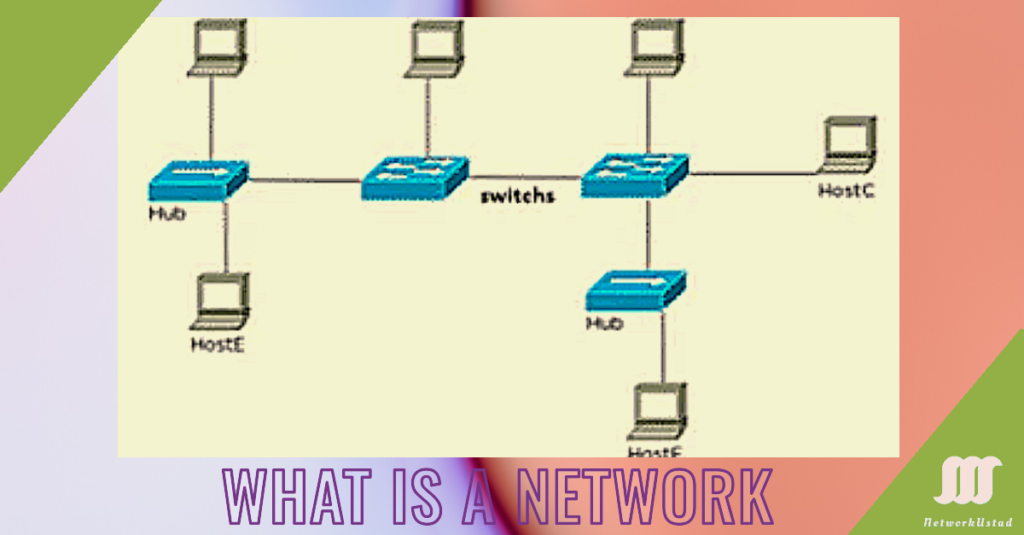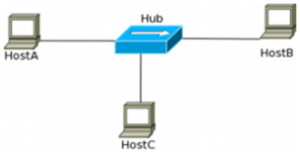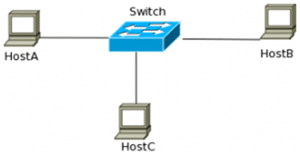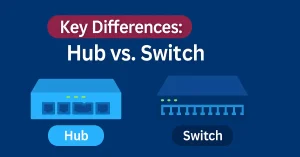Before starting Cisco Internetworking, the network introduction is important for the networking student to be aware of “what a network is” and “what network is importance themselves”.
So, first of all, what is a network?
In simple words, It is a collection of interconnected devices (such as computers, printers, etc.) in such a way that they can communicate with each other. To better understand, let us look at the example of how things worked before networks. For this, suppose a large international company that sells ABC products at a time when networks did not exist.
Let us call this company XYZ Inc. to see in your mind’s eye the amount of information, such as sales, inventory, accounts, etc., required by the management of the company to make everyday decisions. To get this information, they will need to call their local offices.
Their local offices will need postal mail or faxing from your email for printed reports, or even send media (floppies!) through the postal service. This is a long and time-consuming process. This job also increases the chance of error since large numbers of reports are manually processed. This is just one part. You also need to reflect on the information required by the local offices. They also need various data from the head office and other offices around the world.
Now think of the same company but in the present time, with all their offices interrelated through the networks. They would use a single application around the world that takes advantage of their global networks. The data from all offices would be instantly stored at the central site, the administration team can see data from around the world in any format. This data would also be real-time. This means that they see it as it’s happening. After centralizing the data, any site office can see data from any location.
The cost, time, and effort involved in transferring data were much higher without networks. So networks decrease cost, time, and effort and thereby increase output. They also help in resource optimization by helping to share resources.
Now you are familiar with how beneficial networks are, it’s time to look at how networks work. The figure below shows the most basic form of a network. This figure shows two hosts directly connected using a networking cable. Today every host has a NIC for connectivity.
One end of the cable connects to the NIC on host A and another end to host B. At this stage, do not worry about cables and how the hosts communicate across the network. We will discuss this in detail later in the chapter. At this stage, it is important to understand how hosts connect to a network.
In the Figure below, the hosts are “networked” and can send information to each other. This network is successful, but not scalable. If you have more than 2 hosts in this “network”, it will not work without a separate NIC card for each connection and that is not scalable or realistic. For more than 2 hosts to be networked, you need a device such as a hub. The figure below shows three hosts connected to a hub.
In the figure above, the hub will relay any information received from Host-A to both Host-B and C. This means that all three hosts can communicate with each other. When network hosts connect using a hub, two problems arise:
- A hub repeats information received from one host to all the other hosts. To understand this, consider Host-A in the above network sending a unicast message to Host-B. When the hub receives this message, it will relay the message to both Host-B and Host-C.
- A hub creates a shared networking medium where only a single host can send packets at a time. If another host attempts to send packets at the same time, a collision will occur. Then each device will need to resend its packets and hope not to have a collision again. This shared network medium is a single collision domain.
The problems related to hubs can slow the process. To overcome these, use switches instead of a hub. Similar to hubs, switches connect hosts, but switches break up collision domains by providing a single collision domain for each port. This means that every host gets its collision domain thereby eliminating the collisions in the network. With switches, each host can send data anytime. Switches simply “switch” the data from one port to another in the switched network. Also, unlike hubs, switches do not flood every packet out of all ports. They switch a unicast packet to the port where the destination host resides. They only flood out a broadcast packet. The figure below shows a switched network.
Remember that each host in the Figure above is in its collision domain, and if Host-A sends a packet to Host-C, Host-B will not receive it. Communication between hosts connected to the switch is of three types:
- Unicast – Communication from one host to another host only.
- Broadcast – Communication from one host to all the hosts in the network.
- Multicast– Communication from one host to a few hosts only
The figure below shows a network. See if you can figure out how many collision domains exist in the network.
If you answered 6 then you are correct since each port of the Switches represents a single collision domain. If you answered more than 5, remember that a hub does not break collision domains.
Now that you know how a switch works, consider the one problem associated with a switched network. Earlier, you learned that hubs flood out all packets, even the unicast ones. A switch does not flood out unicast packets, but it does flood out a broadcast packet. All hosts connected to a switched network are said to be in the same broadcast domain. All hosts connected to it will receive any broadcast sent out in this domain.
While broadcasts are useful and essential for network operations, in a large switched network, too many broadcasts will slow down the networking process. To remedy this situation, networks are broken into smaller sizes, and these separate sub-networks are interconnected using routers. Routers do not allow broadcasts to be transmitted across different networks. They interconnect and, hence, effectively break up a broadcast domain.
In the network shown in the Figure below, broadcasts from hosts connected to one switch will not reach hosts connected to another. This is because the router will drop the broadcast on its receiving interface.
In addition to breaking up broadcast domains, routers also do the following essential functions in any network:
Packet Switching
At the barest least, routers are like switches because they switch packets between networks.
Path Selection
Routers can talk to each other to learn about all the networks connected to various routers and then select the best path to reach a network.
Packet Filtering
Routers can drop or send packets based on certain criteria, like their source and destination. This is also discussed in detail later in the book.
FAQs
What is the fundamental concept of a network, and why is it important?
A network is a collection of interconnected devices, like computers and printers, allowing them to communicate with each other. It’s crucial because it enhances communication and resource sharing, ultimately saving time and cost.
How have networks transformed the way businesses operate, compared to the pre-network era?
Networks have revolutionized business operations. Previously, companies relied on time-consuming methods like postal mail, fax, and manual processing of reports. With networks, they can access real-time data from around the world instantly, leading to improved efficiency and decision-making.
How do networks help reduce costs and increase productivity?
Networks reduce costs by streamlining data transfer and sharing, eliminating manual processes. They increase productivity by making resources available across locations and enabling real-time data access.
What’s the basic structure of a network, and how do hosts connect in a network?
Hosts in a network connect using a network cable. Each host has a Network Interface Card (NIC) that connects to the network. Initially, hosts can be directly connected, but this isn’t scalable.
What is the issue with direct host-to-host connections, and how can it be resolved?
Direct host-to-host connections aren’t scalable beyond two hosts. To connect more hosts, a device like a hub is needed. However, hubs create problems like repeating information to all hosts and sharing a single collision domain.
How do hubs differ from switches, and what problems do hubs introduce in a network?
Hubs repeat data to all hosts and create a shared network medium, leading to collisions and slower communication. Switches, on the other hand, provide separate collision domains for each host, eliminating collisions.
What is the role of switches in breaking up collision domains and improving network performance?
Switches create a separate collision domain for each port, ensuring that each host can send data at any time without collisions. This leads to efficient and speedy data communication.
How does a switch handle different types of communication between hosts in a network?
A switch manages unicast, broadcast, and multicast communication. It sends unicast data only to the intended destination, while it broadcasts data to all hosts in the same broadcast domain.
Why can an excessive number of broadcasts slow down a network, and how is this issue resolved?
Too many broadcasts can hinder network performance. To mitigate this, networks are divided into smaller sub-networks interconnected with routers, which break up broadcast domains and ensure efficient data flow.
What additional functions do routers perform in a network besides breaking up broadcast domains?
Routers handle packet switching, path selection, and packet filtering. They switch packets between networks, select the best path to reach a network, and filter packets based on criteria like source and destination. This enhances network functionality and security.
Before going to the next lessons, take your self-assessment with our free quiz test using the following links
Quiz 3 Basic Network Component CCNA (200-301)
Quiz Comparing Switch and Router – CCNA (200-301)
Quiz What is a Network – CCNA (200-301)








